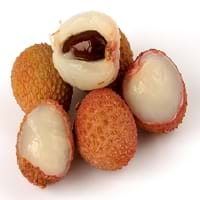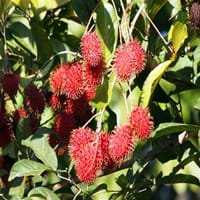Health Benefits
Cancer prevention, Cures gastro-intestinal troubles, Heart care, Muscle pain relief, Prevents blindness from diabetes
Anti-oxidant properties, Boosts immune system, Skin rejuvenation, Strengthening of bones
General Benefits
Boosts immune system, Digestive aid, Fights against infections, Helps in weight loss, Maintains healthy cholesterol level, Strengthens bones
Antiseptic properties, Cures headache, Removes waste from kidney
Skin Benefits
Anti-aging benefits, Skin rejuvenation
Hydrates skin
Hair Benefits
Promotes longer and healthier hair, Protects hair
Good conditioner
Allergy Symptoms
Coughing, Diarrhea, Headaches, Hives, Itching, Labored Breathing, Nausea, Runny nose, Swelling of mouth, tongue or lips, Vomiting, Watery eyes
Chest pains, Rhinitis, Wheezing
Side Effects
May cause abdominal pain, Diarrhoea, Mouth irritation, Throat irritation, Weight gain
Unknown
Best Time to Eat
As a snack in the late afternoon, Don't consume at night and before bed, Eat the fresh ones, avoid mixing with any other foods, don't eat after meal., Morning time (before lunch), Strictly avoid empty stomach
As a snack in the late afternoon, Don't consume at night and before bed, Eat the fresh ones, avoid mixing with any other foods, don't eat after meal., Morning time (before lunch)
Vitamin B5 (Pantothenic Acid)
Vitamin C (Ascorbic Acid)
Vitamin K (Phyllochinone)
Phytosterol
Not Available
Calories in Fresh Fruit with Peel
Not Available
Calories in Fresh Fruit without Peel
Not Available
Calories in Jam
Not Available
Calories in Pie
Not Available
Type
Tree fruit, Tropical
Tree fruit, Tropical
Season
Spring, Summer
Early summer, Early winter, Late fall, Late spring
Varieties
Emperor fruit, Mauritiu, Sweet Heart, Brewster, Haak Yip and Bengal
Rongrien, Chompu, Rapiah, Bingjai and Lebak Bulus
Color
Bright red, Pink red
Coral red, Yellow
Inside Color
Greyish-white
Greyish-white
Taste
Crunchy, Juicy, Sweet
Sour, Sweet
Origin
China, Indonesia, Philippines, Vietnam
Unknown
Soil Type
Alluvial, Loam, Well-drained
Clay, Loam
Climatic Conditions
Absence of strong wind, Cold, Dry, Without frosts
Humid
Facts about
- The seed of Lychee fruit is toxic & can adversely affect the digestive system.
- This fruit gives a smoky flavor when eaten dried.
- This fruit is a symbol of love and romance in China.
- Oils extracted from its seeds is used to make soaps and candles.
- 'Rambut' means hairy in Malay.
- It makes the best hair mask.
- Seeds are edible and healthy too.
Top Producer
China
Thailand
Other Countries
Australia, India, South Africa, Thailand, United States of America
Africa, India, Indonesia, Malaysia, Philippines, Sri Lanka
Top Importer
Hong Kong
Singapore
Top Exporter
China
Thailand
Botanical Name
Litchi chinensis
Nephelium lappaceum
Synonym
Nephelium litchi
Rambota
Subkingdom
Tracheobionta
Tracheobionta
Division
Magnoliophyta
Tracheophyta
Class
Magnoliopsida
Magnoliopsida
Order
Sapindales
Sapindales
Family
Sapindaceae
Sapindaceae
Species
L. chinensis
N. lappaceum
Generic Group
Soapberry
Not Available
Compare Lychee and Rambutan
It is important compare Lychee and Rambutan as both the fruits have a different nutritional value. Their comparison can be done on the basis of their vitamin and mineral content, calories, benefits as well as characteristics, making it easier for us to choose the best fruit for our diet. Their general health benefits are as follows:
Lychee Benefits: boosts immune system, digestive aid, fights against infections, helps in weight loss, maintains healthy cholesterol level and strengthens bones.
Rambutan Benefits: antiseptic properties, cures headache and removes waste from kidney.
Fruits are also used as a remedy for various hair problems. The hair benefits of Lychee are: promotes longer and healthier hair and protects hair and hair benefits of Rambutan are: good conditioner. Some fruits are known to cause allergic reactions. The allergy symptoms of first fruit are: coughing, diarrhea, headaches, hives, itching, labored breathing, nausea, runny nose, swelling of mouth, tongue or lips, vomiting and watery eyes and the symptoms of second fruit are: chest pains, rhinitis and wheezing. Get sorted Lychee vs Rambutan comparison with the help of fruit comparison tool by fruitvs.com.









